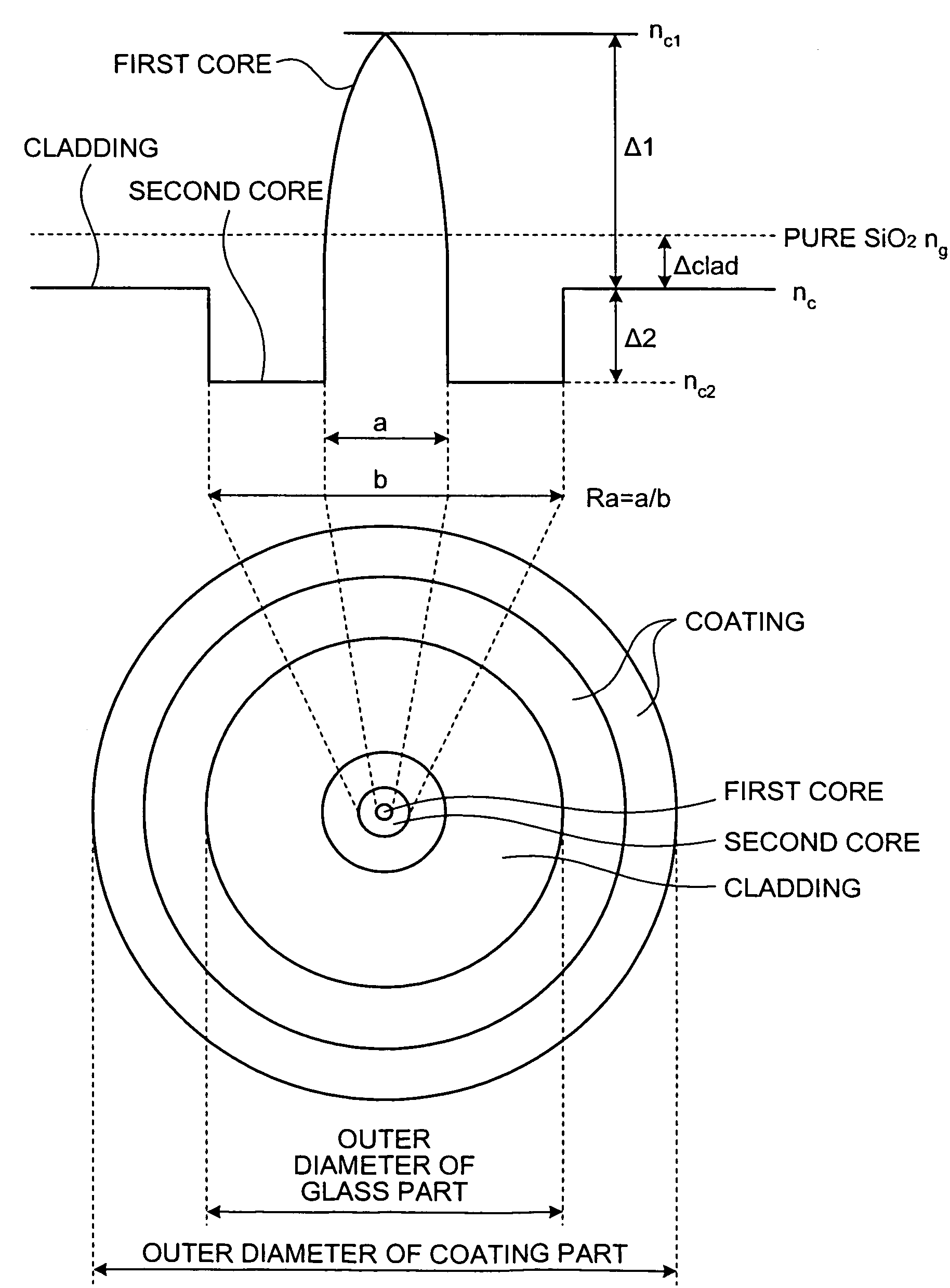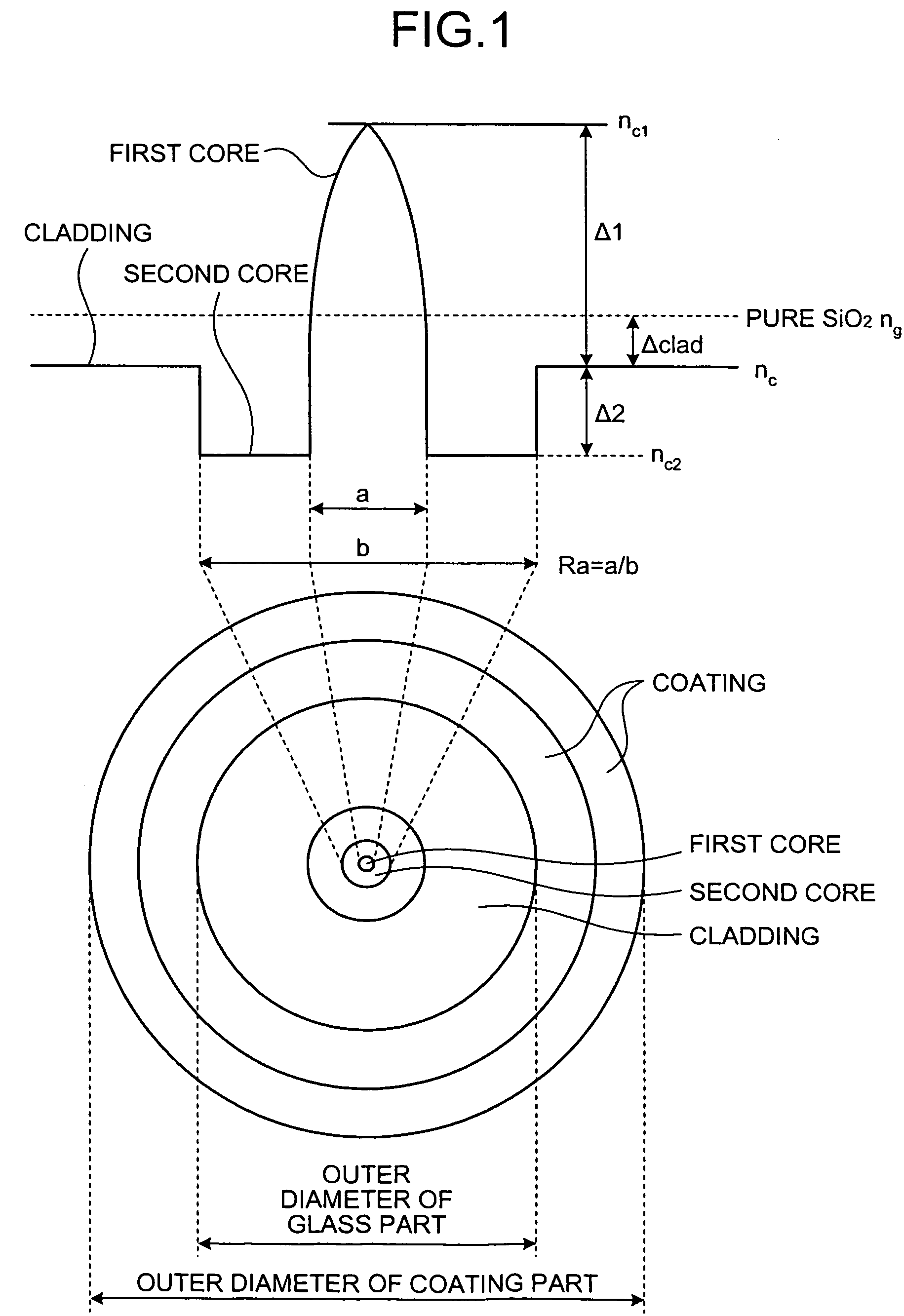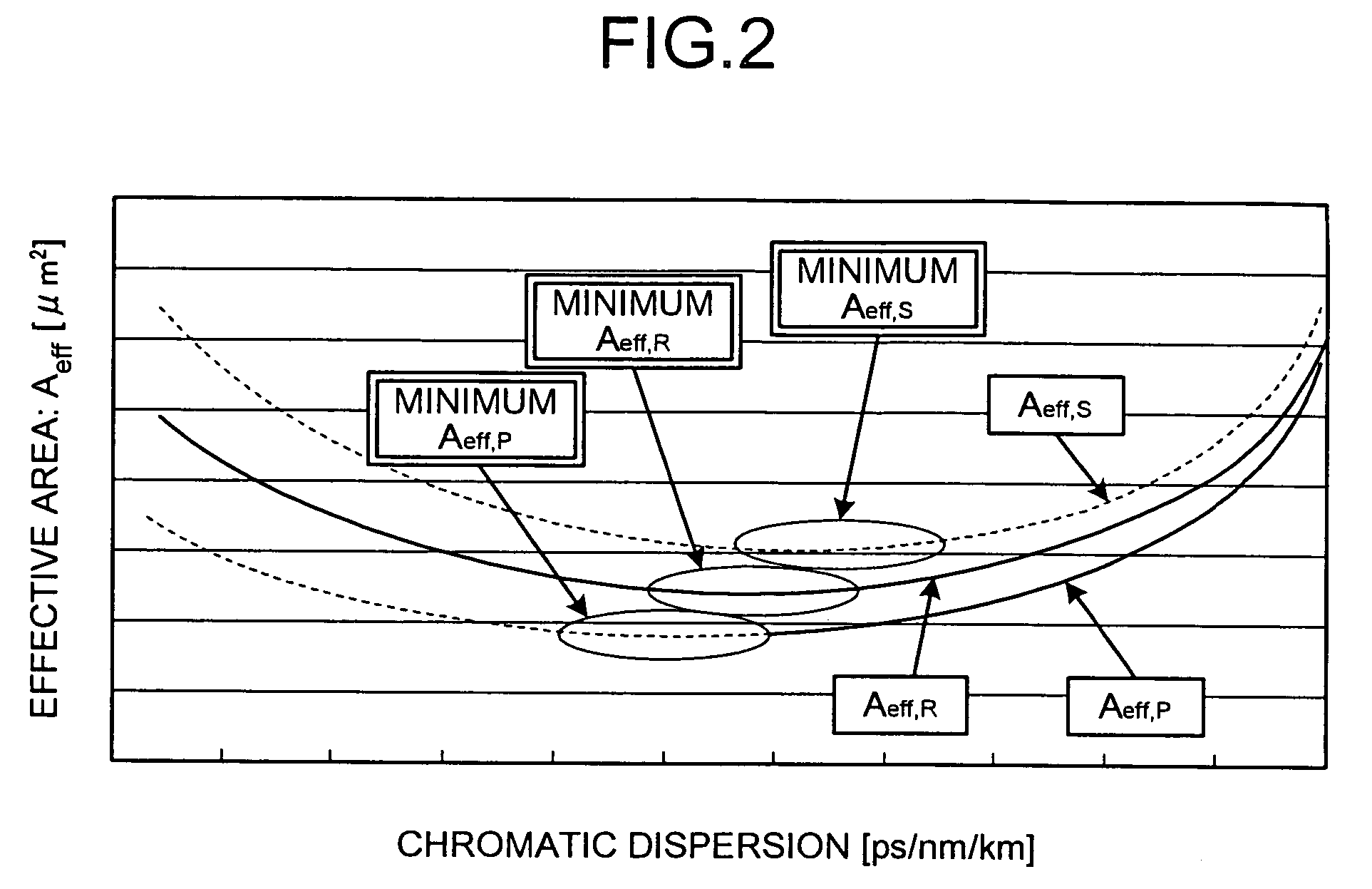Optical fiber for Raman amplification, optical fiber coil, Raman amplifier, and optical communication system
a technology of optical fiber and amplifier, applied in the field of optical fiber for raman amplification, optical fiber coil, raman amplifier, and optical communication system, can solve the problems of poor amplification efficiency of conventional raman amplifier, degraded amplification efficiency, and insufficient application of raman amplifier
- Summary
- Abstract
- Description
- Claims
- Application Information
AI Technical Summary
Benefits of technology
Problems solved by technology
Method used
Image
Examples
Embodiment Construction
[0038]Exemplary embodiments of the present invention will be described below in detail with reference to the accompanying drawings. In the following description, common components are denoted by the same reference numerals and overlapping descriptions are omitted to avoid redundant explanations. The diagrams are not to the scale.
[0039]FIG. 1 is a schematic for illustrating a refractive index profile and a cross section of an optical fiber for Raman amplification according to the present invention.
[0040]The optical fiber includes a glass part substantially made of silicon dioxide (SiO2) and a coating surrounding the glass part. The glass part includes a first core having a diameter a, a second core that surrounds the first core and has a diameter b and a refractive index smaller than that of the first core, and a cladding that surrounds the second core and has a refractive index smaller than that of the first core and larger than that of the second core. The outer circumference of th...
PUM
| Property | Measurement | Unit |
|---|---|---|
| wavelength | aaaaa | aaaaa |
| diameter | aaaaa | aaaaa |
| diameter | aaaaa | aaaaa |
Abstract
Description
Claims
Application Information
 Login to View More
Login to View More - R&D
- Intellectual Property
- Life Sciences
- Materials
- Tech Scout
- Unparalleled Data Quality
- Higher Quality Content
- 60% Fewer Hallucinations
Browse by: Latest US Patents, China's latest patents, Technical Efficacy Thesaurus, Application Domain, Technology Topic, Popular Technical Reports.
© 2025 PatSnap. All rights reserved.Legal|Privacy policy|Modern Slavery Act Transparency Statement|Sitemap|About US| Contact US: help@patsnap.com



